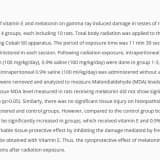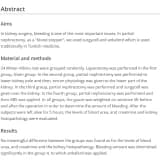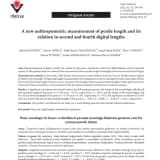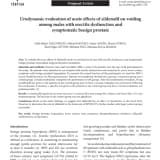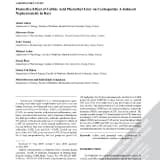Improvement of monosymptomatic enuresis after adenotonsillectomy in children with obstructive sleep apnea syndrome(scı-scı expandıe)
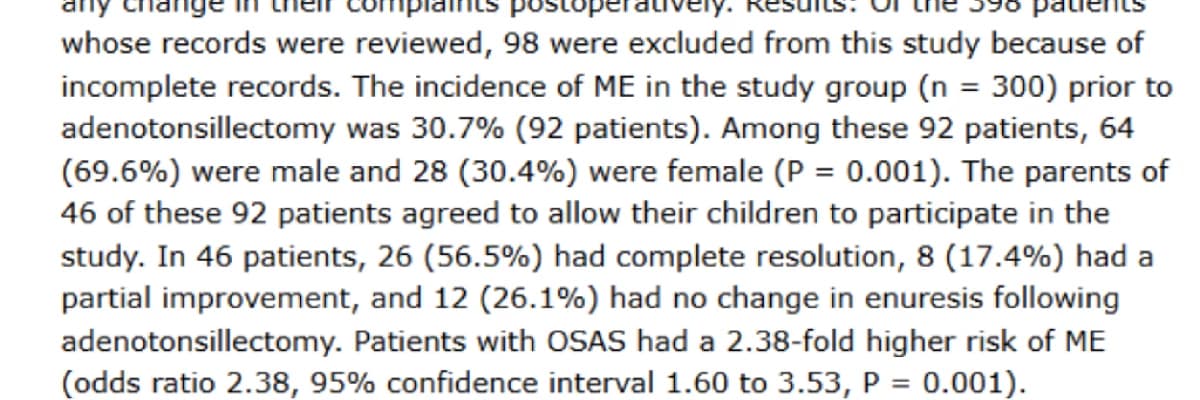
Improvement of monosymptomatic enuresis after adenotonsillectomy in children with obstructive sleep apnea syndrome
Authors
AHMET GÖKÇE
SÜNDÜS ASLAN
FATİH RÜŞTÜ YALÇINKAYA
MÜRSEL DAVARCI
YUSUF SELİM KAYA
NAZAN SAVAŞ
SADIK GÖRÜR
ŞAFAK DAĞLI
AHMET NAMIK KİPER
MEVLANA DERYA BALBAY
Abstract
To investigate the prevalence of monosymptomatic enuresis (ME) in children diagnosed with obstructive sleep apnea syndrome (OSAS) and the rate of resolution or improvement in enuresis following adenotonsillectomy. Materials and methods: We retrospectively reviewed the charts of 541 consecutive patients who underwent adenotonsillectomy for OSAS secondary to adenotonsillar hypertrophy between January 2005 and January 2009. All of the charts for patients between 5 and 18 years of age at the time of surgery (n = 398) were included in the study. After reviewing the charts, the families were contacted by telephone. Those patients who had shown preoperative symptoms of enuresis were questioned to determine whether there had been any change in their complaints postoperatively. Results: Of the 398 patients whose records were reviewed, 98 were excluded from this study because of incomplete records. The incidence of ME in the study group (n = 300) prior to adenotonsillectomy was 30.7% (92 patients). Among these 92 patients, 64 (69.6%) were male and 28 (30.4%) were female (P = 0.001). The parents of 46 of these 92 patients agreed to allow their children to participate in the study. In 46 patients, 26 (56.5%) had complete resolution, 8 (17.4%) had a partial improvement, and 12 (26.1%) had no change in enuresis following adenotonsillectomy. Patients with OSAS had a 2.38-fold higher risk of ME (odds ratio 2.38, 95% confidence interval 1.60 to 3.53, P = 0.001). Conclusion: Children with OSA symptoms have a high rate of monosymptomatic enuresis. Relief of OSA symptoms also resulted in the complete resolution or partial improvement of ME in more than two-thirds of patients. In the differential diagnosis of a child presenting with enuresis, OSAS should be kept in mind and, conversely, the presence of enuresis should be investigated in children presenting with OSA symptoms.
DOI
10.3906/sag-1004-809
Keywords
Monosymptomatic enuresis, obstructive sleep apnea, adenotonsillectomy
First Page
757
Last Page
761
Recommended Citation
GÖKÇE, AHMET; ASLAN, SÜNDÜS; YALÇINKAYA, FATİH RÜŞTÜ; DAVARCI, MÜRSEL; KAYA, YUSUF SELİM; SAVAŞ, NAZAN; GÖRÜR, SADIK; DAĞLI, ŞAFAK; KİPER, AHMET NAMIK; and BALBAY, MEVLANA DERYA (2012) "Improvement of monosymptomatic enuresis after adenotonsillectomy in children with obstructive sleep apnea syndrome," Turkish Journal of Medical Sciences: Vol. 42: No. 5, Article 2. https://doi.org/10.3906/sag-1004-809
Available at: https://journals.tubitak.gov.tr/medical/vol42/iss5/2

